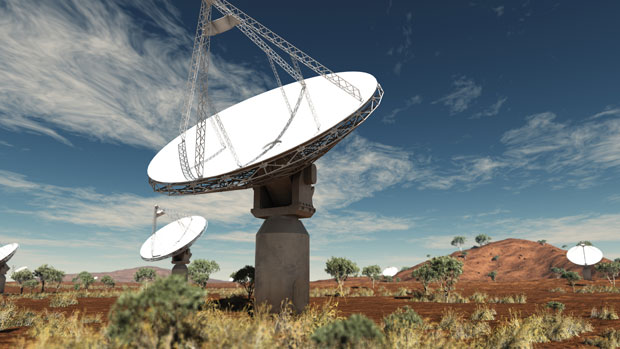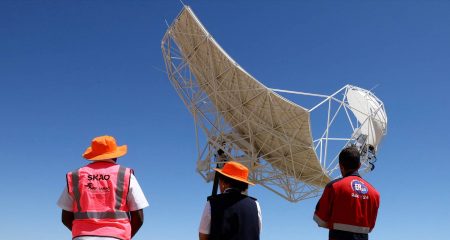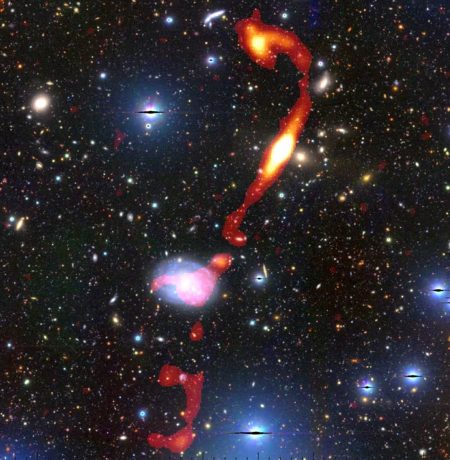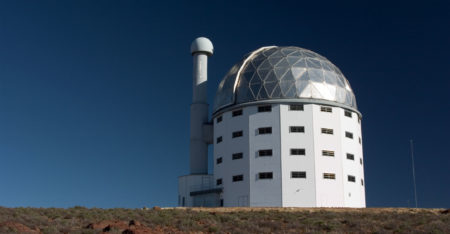
In the coming decades, human beings will, for the first time, have comprehensive maps of the universe, says Roy Maartens, professor and research chair in cosmology at the University of the Western Cape.
“If you have surveys [of the skies] from today to, say, 10bn years ago, we can make huge, moving maps of the universe.”
On Monday, in a series of scientific papers published on astrophysics website arxiv.org, an international team of scientists laid out plans for these gigantic surveys, with the Square Kilometre Array (SKA) playing a vital role.
The SKA, which will have thousands of dishes and antennas in Australia and Africa, will be the largest radio telescope built, and one of the biggest pieces of scientific infrastructure on Earth.
The core of the telescope will be in South Africa, in the Northern Cape, and will attempt to answer some of humanity’s most enigmatic questions, such as: is there other life in the universe, how do galaxies form and what is dark energy?
Working groups in the international SKA Organisation are developing science cases and will use the telescope to try to answer these kinds of questions.
Maartens, who is head of the Cosmology Science Working Group of the SKA project, says: “There are six other working groups, and there have been chapters coming from all of them.”
His group decided to publish theirs all at once. About 130 papers have been published so far.
The first phase of the SKA — which will incorporate South Africa’s 64-dish MeerKAT telescope and Australia’s ASKAP — is expected to be complete in 2023, and the second phase, which will be 10 times larger than the first, in the “late 2020s”, the SKA Organisation said on Monday.
“It’s rewarding to see all these papers being published,” says Robert Braun, the SKA Organisation’s science director. “The wide range of science covered in them is testimony to the SKA’s potential as a 21st century facility to revolutionise many areas of study in astrophysics, but also in physics, astrochemistry and beyond,” he says.
One area of science that the SKA and a number of other international experiments will investigate is mapping the universe. “The standard way to map the positions of galaxies is to painstakingly detect the faint radio signals from many individual galaxies, staring at them for long enough to measure properties like their distance,” the SKA Organisation said in a release.
At the moment, researchers have mapped the position of only about a million galaxies, but by the late 2020s, they hope to have found almost a billion, the organisation said.
“Even before the billion-galaxy survey is built, phase one of the SKA will be able to produce maps of nearly the entire universe and the matter in it at different periods in time, using an innovative new technique called intensity mapping,” Maartens says.
He points to the example of the map of the comic microwave background (CMB), residual thermal radiation thought to be from the Big Bang that permeates the universe. “With CMB, we have this exquisite map of the sky” but it is only a snapshot of the early universe, he says.
“In the coming decades … we will have something like the CMB [map] but at different slices of time — a three-dimensional map of nearly the whole universe.”
Maartens is careful to point out that other future survey experiments — such as European Space Agency’s Euclid satellite and America’s Large Synoptic Survey Telescope — will also create maps of the universe, although they will not quite match the depth and scale of the full SKA.
But it is difficult to pin down science cases. “Some of the science objectives will need to be modified,” says Maartens. “You want flexibility. You don’t want to constrain yourself by locking down on a few definite objectives — you have to be able to deal with unknowns.”
This is because of the importance of serendipity, when unexpected things that you do not know are discovered. “Science cases … explicitly talk about the discovery aspect,” he says. — (c) 2015 Mail & Guardian
- Visit the g, the smart news source




